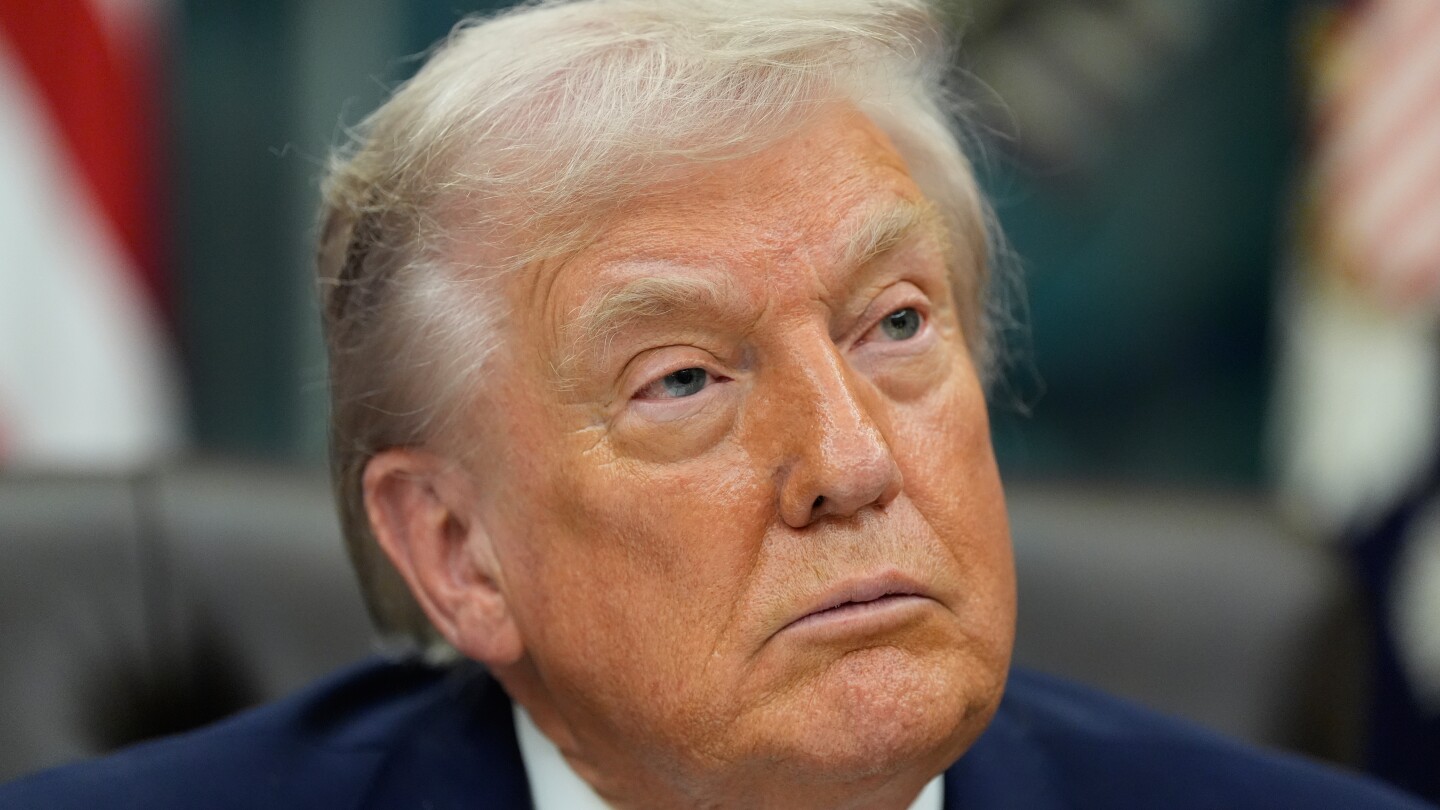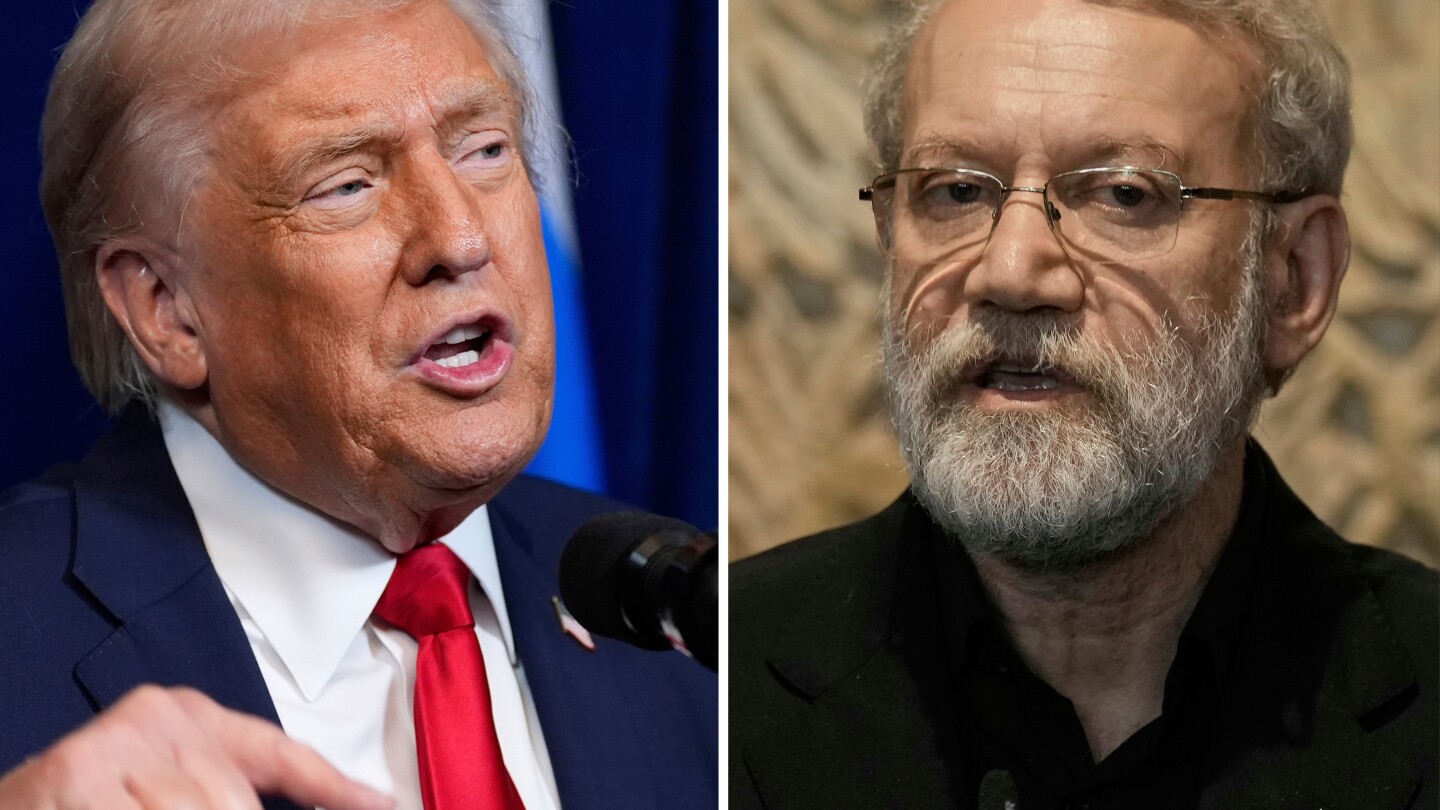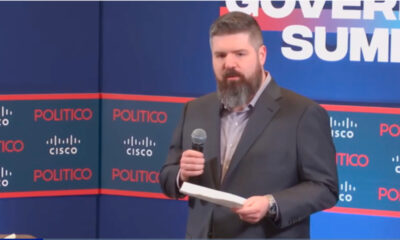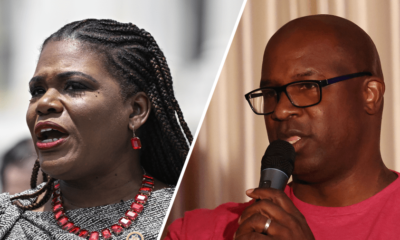The Dictatorship
Following criminal sentence, Trump turns to supporters for money

In the days leading up to Donald Trump’s sentencing in his criminal case, the president-elect published some hysterical rants to his social media platform, baselessly describing the judge in the case as “corrupt,” condemning the case as “a Rigged Charade” and even attacking the Justice Department and the FBI, which had nothing to do with his New York prosecution.
During the sentencing, the defendant continued to whine unnecessarilyat one point even labeling the local prosecutor who indicted him as a “criminal.” Immediately after he was sentenced, the Republican kept going, publishing yet another online tirade filled with weird conspiracy theories.
All of this, of course, helped to set the stage for his inevitable fundraising appeal. NBC News noted:
Trump sent out a fundraising email immediately after being sentenced, saying he wants to hear from his supporters. The email links to a page soliciting monetary donations and asking if they stand with him after his sentencing.
MaddowBlog obtained a copy, and it’s a doozy.
“They’re trying to sabotage the Presidential Transition process,” the fundraising message reads, despite the fact that Trump’s criminal sentence will have literally no effect on the presidential transition process, and it’s not at all clear who “they” might be.
The same message added, “They’re trying to END the presidency as we know it — just before I take office!” (The American presidency will remain unaffected by the outcome of this case, though Trump’s successors will probably think twice before paying hush money to porn stars.)
Apparently hoping to encourage prospective donors, the appeal also included this line: “I WANT TO READ EVERY RESPONSE TONIGHT — SUBMIT NOW.”
Part of the problem with this is that Trump, his overwrought complaints notwithstanding, was hardly punished at all. Yes, he’s been convicted of 34 felonies, and the outcome carries some political significance, but an “unconditional discharge” sentence means the president-elect won’t spend a second behind bars, won’t have to pay any fines and won’t even be on probation.
The Republican has been held accountable for wrongdoing — for his critics, a welcome change of pace — but he’s effectively escaped real consequences thanks to a penalty-free sentence, which makes his overdramatic reach for the fainting couch difficult to countenance.
Another element to keep in mind is that the Republican clearly doesn’t need the money. His pre-inaugural fundraising efforts have been extraordinarily successfulto the point that his team is reportedly no longer offering VIP packagesand given that Trump can’t run for another term, the latest appeal seems wholly unnecessary.
But even if we put these details aside, it’s the broader political environment that stands out as truly extraordinary.
In theory, a politician convicted of nearly three dozen felonies should hope the public pays as little attention as possible to the developments. But in practice, given the state of Republican Party politics in 2025, it seems oddly normal to see the incoming American president effectively say, “A jury heard the evidence against me; they found me guilty; and I’ve been sentenced for many felonies — so you should definitely reward me with cash.”
What’s more, recent history suggests that Trump’s latest appeal will, in fact, have the intended effect, and his followers will respond to his criminal sentence by reaching for their wallets.
There’s an old adage: Crime doesn’t pay. It’s hard not to notice that Trump continues to put that maxim to the test.
Steve Benen is a producer for “The Rachel Maddow Show,” the editor of MaddowBlog and an BLN political contributor. He’s also the bestselling author of “Ministry of Truth: Democracy, Reality, and the Republicans’ War on the Recent Past.”
The Dictatorship
President Trump orders divestment in $2.9 million chips deal to protect US security interests

WASHINGTON (AP) — President Donald Trump on Friday ordered the unraveling of a $2.9 million computer chips deal that he concluded threatened U.S. security interests if the current owner, HieFo Corp., remained in control of the technology.
The executive order cast a spotlight on a business deal that drew scant attention when it was announced in May 2024 during President Joe Biden’s administration. The deal involved aerospace and defense specialist Emcore Corp. selling its computer chips and wafer fabrication operations to HieFo for $2.92 million — a price that included the assumption of about $1 million in liabilities.
But Trump is now demanding that HieFo divest that technology within 180 days, citing “credible evidence” that the current owner is a citizen of the People’s Republic of China.
HieFo was founded by Dr. Genzao Zhang and Harry Moore. According to a press release that came out after the deal closed, plans for the technology acquired from Emcore were to be overseen by largely the same team of employees in Alhambra, California.
Zhang, who was a vice president of engineering at Emcore before becoming HieFo’s CEO, pledged to “continue the pursuit of the most innovative and disruptive solutions” with technology designed for purposes that would include artificial intelligence.
HieFo didn’t immediately respond to a request for comment about Trump’s order.
Emcore was a publicly traded company at the time of the HieFo deal, but was taken private last year by the investment firm Charlesbank Capital Partner.
The Dictatorship
Trump is planning to revamp the ‘president’s golf course’

WEST PALM BEACH, Fla. (AP) — President Donald Trump has spent much of his two-week vacation in Florida golfing. But when he gets back to the White House, there’s a military golf course that he’s never played that he’s eyeing for a major construction project.
Long a favored getaway for presidents seeking a few hours’ solace from the stress of running the free world, the Courses at Andrews — inside the secure confines of Joint Base Andrews in Maryland, about 15 miles (24 kilometers) from the White House — are known as the “president’s golf course.” Gerald Ford, Ronald Reagan, George H.W. Bush, Bill Clinton, George W. Bush and Joe Biden have spent time there, and Barack Obama played it more frequently than any president, roughly 110 times in eight years.
President George H.W. Bush talks with tennis star Andre Agassi, left, and actor Kevin Costner, right, while playing the 18th hole at Andrews Air Force Base, Md., July 28, 1991. (AP Photo/Doug Mills, File)
President George H.W. Bush talks with tennis star Andre Agassi, left, and actor Kevin Costner, right, while playing the 18th hole at Andrews Air Force Base, Md., July 28, 1991. (AP Photo/Doug Mills, File)
Trump has always preferred the golf courses his family owns — spending about one of every four days of his second term at one of them. But he’s now enlisted golf champion Jack Nicklaus as the architect to overhaul the Courses at Andrews.
“It’s amazing that an individual has time to take a couple hours away from the world crises. And they’re people like everybody else,” said Michael Thomas, the former general manager of the course, who has golfed with many of the presidents visiting Andrews over the years.
Andrews, better known as the home of Air Force Onehas two 18-hole courses and a 9-hole one. Its facilities have undergone renovations in the past, including in 2018, when Congress approved funding to replace aging presidential aircraft and to build a new hangar and support facilities. That project was close enough to the courses that they had to be altered then, too.
Trump toured the base by helicopter before Thanksgiving with Nicklaus, who has designed top courses the world over. The president called Andrews “a great place, that’s been destroyed over the years, through lack of maintenance.”
Other golfers, though, describe Andrews’ grounds as in good shape, despite some dry patches. Online reviews praise the course’s mature trees, tricky roughs, and ponds and streams that serve as water hazards. The courses are mostly flat, but afford views of the surrounding base.
‘They all like to drive the cart’
The first president to golf at Andrews was Ford in 1974. Thomas began working there a couple years later, and was general manager from 1981 until he retired in 2019.
He said the Secret Service over the years used as many as 28 golf carts — as well as the president’s usual 30-car motorcade — to keep the perimeter secure.
“It’s a Cecil B. DeMille production every time,” said Thomas, who had the opportunity to play rounds with four different presidents, and with Biden when he was vice president.
He said the commanders in chief generally enjoyed their time out on the course in their own unique ways, but “they all like to drive the cart because they never get an opportunity to drive.”
“It’s like getting your driver’s license all over again,” Thomas laughed.
Michael Thomas, the former manager of the Courses at Andrews at Joint Base Andrews, stands with footballs autographed by several former presidents, Friday, Dec. 19, 2025, in Lothian, Md. (AP Photo/Mark Schiefelbein)
Michael Thomas, the former manager of the Courses at Andrews at Joint Base Andrews, stands with footballs autographed by several former presidents, Friday, Dec. 19, 2025, in Lothian, Md. (AP Photo/Mark Schiefelbein)
Trump golf most weekendsand as of Friday, has spent an estimated 93 days of his second term doing so, according to an Associated Press analysis of his schedules.
That tally includes days when Trump was playing courses his family owns in Virginia, around 30 miles (48 kilometers) from the White House, and near his Florida estate Mar-a-Lagowhere he’s spending the winter holidays. It also includes 10 days Trump spent staying at his golf club in Bedminster, New Jerseywhere his schedule allowed time for rounds of golf.
Trump has visited Andrews in the past, but the White House and base have no record of him playing the courses.
Another of Trump construction projects
Andrews’ military history dates to the Civil War, when Union troops used a church near Camp Springs, Maryland, as sleeping quarters. Its golf course opened in 1960.
The White House said the renovation will be the most significant in the history of Andrews. The courses and clubhouse need improvements due to age and wear, it said, and there are discussions about including a multifunctional event center as part of the project.
“President Trump is a champion-level golfer with an extraordinary eye for detail and design,” White House spokesman Davis Ingle said in a statement. “His vision to renovate and beautify Joint Base Andrews’ golf courses will bring much-needed improvements that service members and their families will be able to enjoy for generations to come.”
Plans are in the very early stages, and the cost of — and funding for — the project haven’t been determined, the White House said. Trump has said only that it will require “very little money.”
The Andrews improvements join a bevy of Trump construction projects, including demolishing the White House’s East Wing for a sprawling ballroom now expected to cost $400 millionredoing the bathroom attached to the Lincoln bedroom and replacing the Rose Garden’s lawn with a Mar-a-Lago-like patio area.
Outside the White House, Trump has led building projects at the Kennedy Center and wants to erect a Paris-style arch near the Lincoln Memorial, and has said he wants to rebuild Dulles International Airport in northern Virginia.
On Wednesday, meanwhile, the Trump administration ended a lease agreement with a non-profit for three public golf courses in Washington — which could allow the president to further shape golfing in the nation’s capital. The White House, however, said that move isn’t related to the plans for Andrews.
Presidential perks of golfing at Andrews
When the president is golfing, Andrews officials block off nine holes at a time so no one plays in front of him, allowing for extra security while also ensuring consistent speed-of-play, Thomas said.
That’s relatively easily done given that the courses aren’t open to the public. They’re usually reserved for active or retired members of the military and their families, as well as some Defense Department-linked federal employees.
Thomas remembers playing a round with the older President Bush, a World Golf Hall of Fame inductee known for fast play, while first lady Barbara Bush walked with Millie, the first couple’s English Springer Spaniel. George W. Bush also played fast, Thomas said, and got additional exercise by frequently riding his mountain bike before golfing.
President George W. Bush practices his swing as he prepares to tee off on the first hole at the golf course at Andrews Air Force Base, Md., July 3, 2002. (AP Photo/Pablo Martinez Monsivais, File)
President George W. Bush practices his swing as he prepares to tee off on the first hole at the golf course at Andrews Air Force Base, Md., July 3, 2002. (AP Photo/Pablo Martinez Monsivais, File)
When he wasn’t golfing at Andrews, Obama tried to recreate at least part of the experience back home. He had a White House golf simulator installed after then-first lady Michelle Obama asked Thomas how they might acquire a model that the president had seen advertised on the Golf Channel. Thomas gave her a contact at the network.
Obama famously cut short a round at Andrews after nine holes in 2011 to hustle back to the White House for what turned out to be a top-secret review of final preparations for a Navy SEAL raid on the compound of Osama bin Laden.
President Barack Obama, right, talks with former President Bill Clinton while playing a round of golf at Andrews Air Force Base Sept. 24, 2011, at Andrews Air Force Base, Md. (AP Photo/Evan Vucci, File)
President Barack Obama, right, talks with former President Bill Clinton while playing a round of golf at Andrews Air Force Base Sept. 24, 2011, at Andrews Air Force Base, Md. (AP Photo/Evan Vucci, File)
But, while Thomas was golfing with presidents, he said he never witnessed play interrupted by an important call or any major emergency that forced them off the course mid-hole. There also were never any rain-outs.
“If there was rain coming, they’d get the weather forecast before we would,” Thomas said. “They would cancel quick on that.”
The Dictatorship
TRUMP AND TEHRAN EXCHANGE THREATS

DUBAI, United Arab Emirates (AP) — U.S. President Donald Trump and top Iranian officials exchanged dueling threats Friday as widening protests swept across parts of the Islamic Republic, further escalating tensions between the countries after America bombed Iranian nuclear sites in June.
At least eight people have been killed so far in violence surrounding the demonstrations, which were sparked in part by the collapse of Iran’s rial currency but have increasingly seen crowds chanting anti-government slogans.
The protests, now in their sixth day, have become the biggest in Iran since 2022, when the death of 22-year-old Mahsa Amini in police custody triggered nationwide demonstrations. However, the protests have yet to be as widespread and intense as those surrounding the death of Amini, who was detained over not wearing her hijab, or headscarf, to the liking of authorities.
Trump post sparks quick Iranian response
Trump initially wrote on his Truth Social platform, warning Iran that if it “violently kills peaceful protesters,” the United States “will come to their rescue.”
“We are locked and loaded and ready to go,” Trump wrote, without elaborating.
Ali Larijani, a former parliament speaker who serves as the secretary of Iran’s Supreme National Security Council, alleged that Israel and the U.S. were stoking the demonstrations. He offered no evidence to support the allegation, which Iranian officials have repeatedly made during years of protests sweeping the country.
“Trump should know that intervention by the U.S. in the domestic problem corresponds to chaos in the entire region and the destruction of the U.S. interests,” Larijani wrote on X, which the Iranian government blocks. “The people of the U.S. should know that Trump began the adventurism. They should take care of their own soldiers.”
Larijani’s remarks likely referenced America’s wide military footprint in the region. Iran in June attacked Al Udeid Air Base in Qatar after the U.S. strikes on three nuclear sites during Israel’s 12-day war on the Islamic Republic. No one was injured, though a missile did hit a structure there.
As of Friday, no major changes had been made to U.S. troop levels in the Middle East or their preparations following Trump’s social media posts, said a U.S. official, who spoke on condition of anonymity to discuss sensitive military plans.
In a letter late Friday to United Nations Secretary-General António Guterres and the U.N. Security Council, Iran’s envoy asked the world body to condemn the rhetoric and reaffirm the country’s “inherent right to defend its sovereignty, territorial integrity, and national security, and to protect its people against any foreign interference.”
“The United States of America bears full responsibility for any consequences arising from these unlawful threats and any ensuing escalation,” said Amir Saeid Iravani, Iranian ambassador to the U.N.
Ali Shamkhani, an adviser to Supreme Leader Ayatollah Ali Khamenei who previously was the council’s secretary for years, separately warned that “any interventionist hand that gets too close to the security of Iran will be cut.”
US signals support for protesters
Trump’s online message marked a direct sign of support for the demonstrators, something other American presidents have avoided out of concern that activists would be accused of working with the West. During Iran’s 2009 Green Movement demonstrationsPresident Barack Obama held back from publicly backing the protests — something he said in 2022 “was a mistake.”
But such White House support still carries a risk.
“Though the grievances that fuel these and past protests are due to the Iranian government’s own policies, they are likely to use President Trump’s statement as proof that the unrest is driven by external actors,” said Naysan Rafati, an analyst at the International Crisis Group.
“But using that as a justification to crack down more violently risks inviting the very U.S. involvement Trump has hinted at,” he added.
Iran’s Foreign Ministry spokesperson Esmail Baghaei recently cited a list of Tehran’s longtime grievances regarding U.S. intervention, including a CIA-backed coup in 1953, the downing of a passenger jet in 1988 and the strikes in June.
Protests continue Friday
Protests continued Friday in various cities in the country, even as life largely continued unaffected in the capital, Tehran. Demonstrations have reached over 100 locations in 22 of Iran’s 31 provinces, the U.S.-based Human Rights Activists News Agency reported. It said the death toll in the demonstrations rose to eight with the death of a demonstrator in Marvdasht in Iran’s Fars province.
Demonstrators took to the streets in Zahedan in Iran’s restive Sistan and Baluchestan province on the border with Pakistan. The burials of several demonstrators killed in the protests also took place Friday, sparking marches.
Videos purported to show mourners chasing off security force members who attended the funeral of 21-year-old Amirhessam Khodayari. He was killed Wednesday in Kouhdasht, over 400 kilometers (250 miles) southwest of Tehran in Iran’s Lorestan province.
Footage also showed Khodayari’s father denying his son served in the all-volunteer Basij force of Iran’s paramilitary Revolutionary Guard, as authorities claimed. The semiofficial Fars news agency later reported that there were now questions about the government’s claims that he served.
Iran’s civilian government under reformist President Masoud Pezeshkian has been trying to signal it wants to negotiate with protesters. However, Pezeshkian has acknowledged there is not much he can do as Iran’s rial has rapidly depreciated, with $1 now costing some 1.4 million rials. That sparked the initial protests.
The protests, taking root in economic issues, have heard demonstrators chant against Iran’s theocracy as well. Tehran has had little luck in propping up its economy in the months since the June war.
Iran recently said it was no longer enriching uranium at any site in the country, trying to signal to the West that it remains open to potential negotiations over its atomic program to ease sanctions. However, those talks have yet to happen as Trump and Israeli Prime Minister Benjamin Netanyahu have warned Tehran against reconstituting its atomic program.
___
Associated Press writers Konstantin Toropin in Washington and Farnoush Amiri in New York contributed to this report.
-

 The Dictatorship11 months ago
The Dictatorship11 months agoLuigi Mangione acknowledges public support in first official statement since arrest
-

 Politics11 months ago
Politics11 months agoBlue Light News’s Editorial Director Ryan Hutchins speaks at Blue Light News’s 2025 Governors Summit
-

 Politics11 months ago
Politics11 months agoFormer ‘Squad’ members launching ‘Bowman and Bush’ YouTube show
-

 The Dictatorship4 months ago
The Dictatorship4 months agoMike Johnson sums up the GOP’s arrogant position on military occupation with two words
-

 Politics11 months ago
Politics11 months agoFormer Kentucky AG Daniel Cameron launches Senate bid
-

 The Dictatorship11 months ago
The Dictatorship11 months agoPete Hegseth’s tenure at the Pentagon goes from bad to worse
-
Uncategorized1 year ago
Bob Good to step down as Freedom Caucus chair this week
-

 Politics9 months ago
Politics9 months agoDemocrat challenging Joni Ernst: I want to ‘tear down’ party, ‘build it back up’


